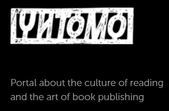Julie Nice on Frédéric Jacques Temple
The life of Frédéric Jacques Temple is, so to speak, the purest image of the XXth century. He took part in many of its greatest and worst events, with an extraordinary sense of simplicity and humanity. He is a pioneer, an adventurer, a son, a father and a husband. The first time I met him was in 2013, when he was awarded the prestigious Prix Apollinaire. Last year, I asked the permission to visit him for my researches, and him and his wife Brigitte invited me at home. I will always remember the evening we spent together, the happiness that emanated from this place, the quietness and softness of the wind as we talked and kids dove into the swimming pool.
Frédéric Jacques Temple was born in 1921 in Montpellier, in the south of France, not far from the Mediterranean. In his childhood, which he describes in his prose and poetry, he used to go to the sea, he swam with dolphins - with which he “spoke a secret language, as old as the world is, born in those times when gods lived on earth” - , fished sharks, admired the multitude of birds among the trees. He discovered the limitless beauty of nature, before it was crushed by modernity and its own multitude of buildings and tourists. Reading Temple’s poems feels and sounds like opening a sensible encyclopedia. Stercorarius pomarinus, puffins, petrels, owls, cranes, kingfishers... The innumerable list of birds, in his poems, flying, chirping, tweeting and buzzing around him is, yet, a “terrible song of memory”; it is a lost Arcadia that reminds us of the fact that, in France and everywhere else, birds are disappearing, and skies are growing more and more silent. Through his words, and the hypnotizing amount of species - both flora and fauna - described, Frédéric Jacques Temple tries to save them, to carve them into the trunks that pages used to be. No rhymes in his poems, but the rhythm of these words, almost forgotten, neglected in some dictionary on a dusty shelf. Yet I saw a seven-year-old boy read these poems, and then discuss with the author about caracal caracal and the length of its ears…
Is it in search of Arcadia that Temple travelled so many times ? He is an insatiable reader, and his childhood was crowded with Fenimore Cooper, Melville and Verne’s characters, Captain Ahab, Professor Aronnax, to whom he would “substitute” himself during his strolls, and whose existence he would never call into question. Temple visited, among other countries, Cuba, Marocco - where he worked as a journalist -, Russia, Brazil, Québec and the United States. He went there on the trail of “The American Poet”, saw Whitman’s house and waited for the osprey. He came back to France with American-Indian wisdoms and proverbs, and a new collection of poems, “The song of horseshoe crabs”, dedicated to this ancestor, the immemorial witness he met on a beach. Has limulus polyphemus ever landed in Arcadia ?
Italy, from ashore, doubtlessly looked like Arcadia when, in 1944, Temple joined the Allied Forces and fought in Monte Cassino and on the road to San Romano. “One day, time stopped for me at the brink of battle and life. Since then, I have waited.” He was 23, and he lost most of his comrades there, and a part of his life. Because Frédéric Jacques Temple loves his neighbour as himself; and his neighbour Lawrence Durrell was his friend, in Occitania and in Greece. And so were Blaise Cendrars, Henry Miller, Richard Aldington, Alain Clément, Vincent Bioulès, Henk Breuker - with whom he created the review La Licorne (The Unicorn) -, Emmanuel Fillot, Robert Sabatier, Robert Marteau... In 1998, with his wife Brigitte, he went back to Italy, and climbed, against the wind and torrential rain, up a hill called Spazzavento - “sweeping wind” in Italian - because he wanted to visit a friend’s grave on the centenary of his birth. Two years later, Temple told the story of his epic ascent in a short book - published by Jacques Brémond -, in memory of this Italian officer who, in 1944 in Naples, invited him to visit his Caprese villa during his leave. Shortly after, in the newspaper, Temple recognized in the Italian dandy officer the author Curzio Malaparte. They sent each other letters and books, and met again in Paris. Malaparte died in 1957, struck down after decades of pain caused by toxic gas he inhaled while fighting for France during World War One. His major books, Kaputt and La pelle, are accounts of the horrors of war. Born shortly after World War One, Temple also felt its horror within his family and homeland. Nature and innocence would soon be swept by Hitler and modernity, just like horseshoe crabs are by the tide.
Frédéric Jacques Temple is also a horseshoe crab. He has ten eyes, some through which he sees the end of the world and the cruelty of Man, and others with which he sees and memorises what is left, the beauties of the world, friendship, nature, love. Sight and writing combined, he gives us one of the purest expressions of contemporary poetry. He gives us hope, and the will to make it last, and ours.
“ Death, the only immortal,
I know that someday she will take me away.
I insurrect,
curse the lethal encounter,
insult the hideous black beast,
but do not waste life
and the least drop of its honey”
Frédéric Jacques Temple was born in 1921 in Montpellier, in the south of France, not far from the Mediterranean. In his childhood, which he describes in his prose and poetry, he used to go to the sea, he swam with dolphins - with which he “spoke a secret language, as old as the world is, born in those times when gods lived on earth” - , fished sharks, admired the multitude of birds among the trees. He discovered the limitless beauty of nature, before it was crushed by modernity and its own multitude of buildings and tourists. Reading Temple’s poems feels and sounds like opening a sensible encyclopedia. Stercorarius pomarinus, puffins, petrels, owls, cranes, kingfishers... The innumerable list of birds, in his poems, flying, chirping, tweeting and buzzing around him is, yet, a “terrible song of memory”; it is a lost Arcadia that reminds us of the fact that, in France and everywhere else, birds are disappearing, and skies are growing more and more silent. Through his words, and the hypnotizing amount of species - both flora and fauna - described, Frédéric Jacques Temple tries to save them, to carve them into the trunks that pages used to be. No rhymes in his poems, but the rhythm of these words, almost forgotten, neglected in some dictionary on a dusty shelf. Yet I saw a seven-year-old boy read these poems, and then discuss with the author about caracal caracal and the length of its ears…
Is it in search of Arcadia that Temple travelled so many times ? He is an insatiable reader, and his childhood was crowded with Fenimore Cooper, Melville and Verne’s characters, Captain Ahab, Professor Aronnax, to whom he would “substitute” himself during his strolls, and whose existence he would never call into question. Temple visited, among other countries, Cuba, Marocco - where he worked as a journalist -, Russia, Brazil, Québec and the United States. He went there on the trail of “The American Poet”, saw Whitman’s house and waited for the osprey. He came back to France with American-Indian wisdoms and proverbs, and a new collection of poems, “The song of horseshoe crabs”, dedicated to this ancestor, the immemorial witness he met on a beach. Has limulus polyphemus ever landed in Arcadia ?
Italy, from ashore, doubtlessly looked like Arcadia when, in 1944, Temple joined the Allied Forces and fought in Monte Cassino and on the road to San Romano. “One day, time stopped for me at the brink of battle and life. Since then, I have waited.” He was 23, and he lost most of his comrades there, and a part of his life. Because Frédéric Jacques Temple loves his neighbour as himself; and his neighbour Lawrence Durrell was his friend, in Occitania and in Greece. And so were Blaise Cendrars, Henry Miller, Richard Aldington, Alain Clément, Vincent Bioulès, Henk Breuker - with whom he created the review La Licorne (The Unicorn) -, Emmanuel Fillot, Robert Sabatier, Robert Marteau... In 1998, with his wife Brigitte, he went back to Italy, and climbed, against the wind and torrential rain, up a hill called Spazzavento - “sweeping wind” in Italian - because he wanted to visit a friend’s grave on the centenary of his birth. Two years later, Temple told the story of his epic ascent in a short book - published by Jacques Brémond -, in memory of this Italian officer who, in 1944 in Naples, invited him to visit his Caprese villa during his leave. Shortly after, in the newspaper, Temple recognized in the Italian dandy officer the author Curzio Malaparte. They sent each other letters and books, and met again in Paris. Malaparte died in 1957, struck down after decades of pain caused by toxic gas he inhaled while fighting for France during World War One. His major books, Kaputt and La pelle, are accounts of the horrors of war. Born shortly after World War One, Temple also felt its horror within his family and homeland. Nature and innocence would soon be swept by Hitler and modernity, just like horseshoe crabs are by the tide.
Frédéric Jacques Temple is also a horseshoe crab. He has ten eyes, some through which he sees the end of the world and the cruelty of Man, and others with which he sees and memorises what is left, the beauties of the world, friendship, nature, love. Sight and writing combined, he gives us one of the purest expressions of contemporary poetry. He gives us hope, and the will to make it last, and ours.
“ Death, the only immortal,
I know that someday she will take me away.
I insurrect,
curse the lethal encounter,
insult the hideous black beast,
but do not waste life
and the least drop of its honey”




